Living in an apartment doesn’t mean you can’t compost. Whether you’re trying to reduce your carbon footprint, feed your potted plants, or just stop tossing food scraps in the trash, balcony composting is an easy, eco-friendly habit to adopt. With the right system, even the smallest outdoor space can become a hub for sustainability.
In this guide, we’ll break down 11 balcony composting systems designed for compact spaces—ranging from DIY hacks to high-tech solutions. Let’s get started.
Why Compost on a Balcony?
Composting converts organic waste into nutrient-rich soil. For urban dwellers with limited outdoor space, composting on the balcony is a smart way to:
- Reduce kitchen waste
- Enrich container gardens
- Avoid smelly trash bins
- Cut down on carbon emissions from food waste in landfills
What to Consider Before Choosing a Composting System
Before investing in or building a balcony composting system, think about:
- Space: Will it fit comfortably without blocking your access or sunlight?
- Composting Type: Aerobic (with oxygen), anaerobic (without oxygen), vermicomposting (worms), bokashi (fermentation)?
- Maintenance: Do you want a low-touch system, or are you okay turning and monitoring it?
- Odor & Pests: Look for sealed units or odor-control features.
- Climate: Some composting systems perform better in warm or temperate climates.
- Final Use: Are you creating compost for container plants or simply reducing waste?
11 Best Balcony Composting Systems
Below are some of the best options for small-space composting—from low-cost DIY to ready-made units.
1. Bokashi Bucket System
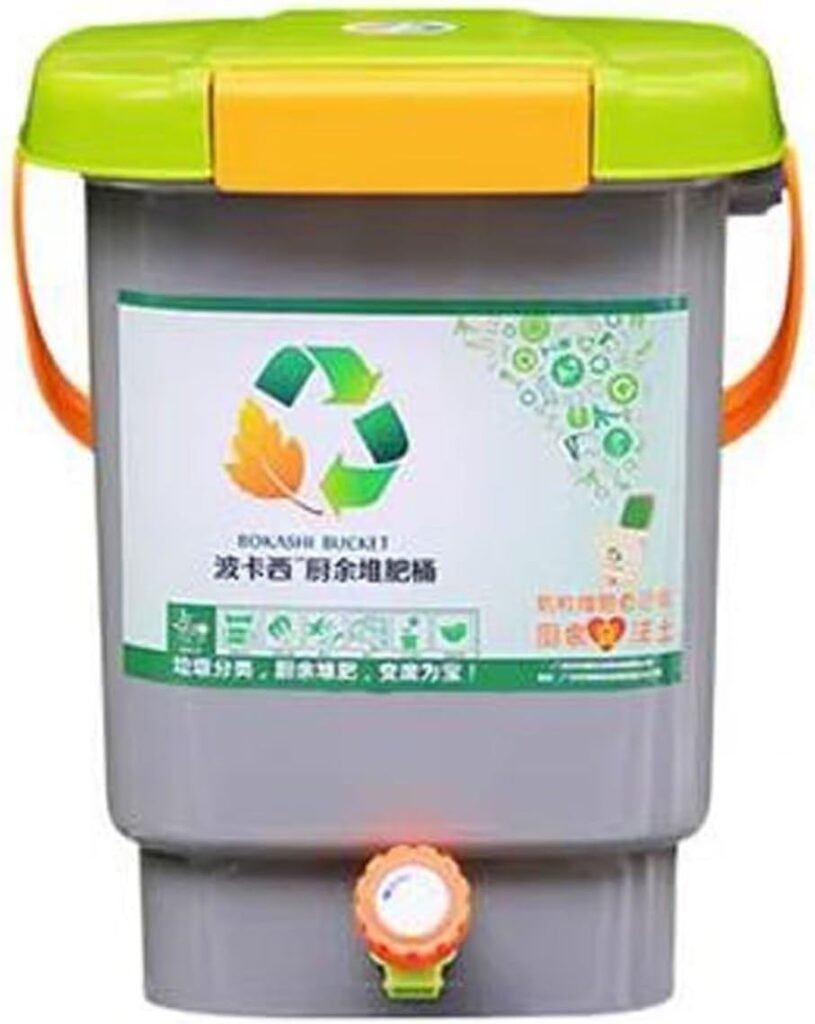
How it works: Bokashi is an anaerobic fermentation process using EM (Effective Microorganisms). You layer food scraps with bokashi bran in an airtight container. After fermenting, the material can be buried in soil or added to a traditional compost bin.
Why it’s great:
- Odor-free
- Works indoors or outdoors
- Handles meat, dairy, and cooked foods
Best for: Urban dwellers wanting an easy indoor-to-balcony compost system.
Tip: Drain the bokashi “tea” every few days to prevent buildup—this liquid makes a great fertilizer when diluted.
2. Worm Bin (Vermicomposting)
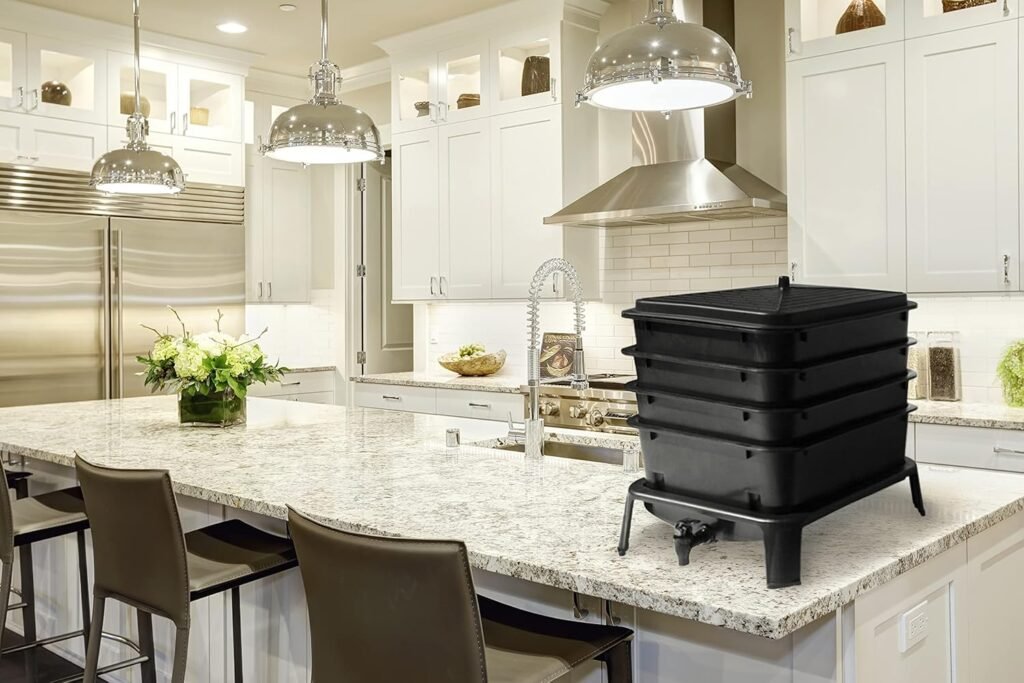
How it works: Red wigglers (not regular garden worms) consume food scraps and produce nutrient-rich castings. A well-maintained worm bin doesn’t smell and is compact enough for balcony use.
Why it’s great:
- Produces excellent fertilizer
- Low-maintenance once established
- Educational and fun for families
Best for: Gardeners who want compost and worm tea for plants.
Tip: Keep the bin out of direct sun to avoid overheating the worms.
3. Dual-Chamber Tumbling Composter
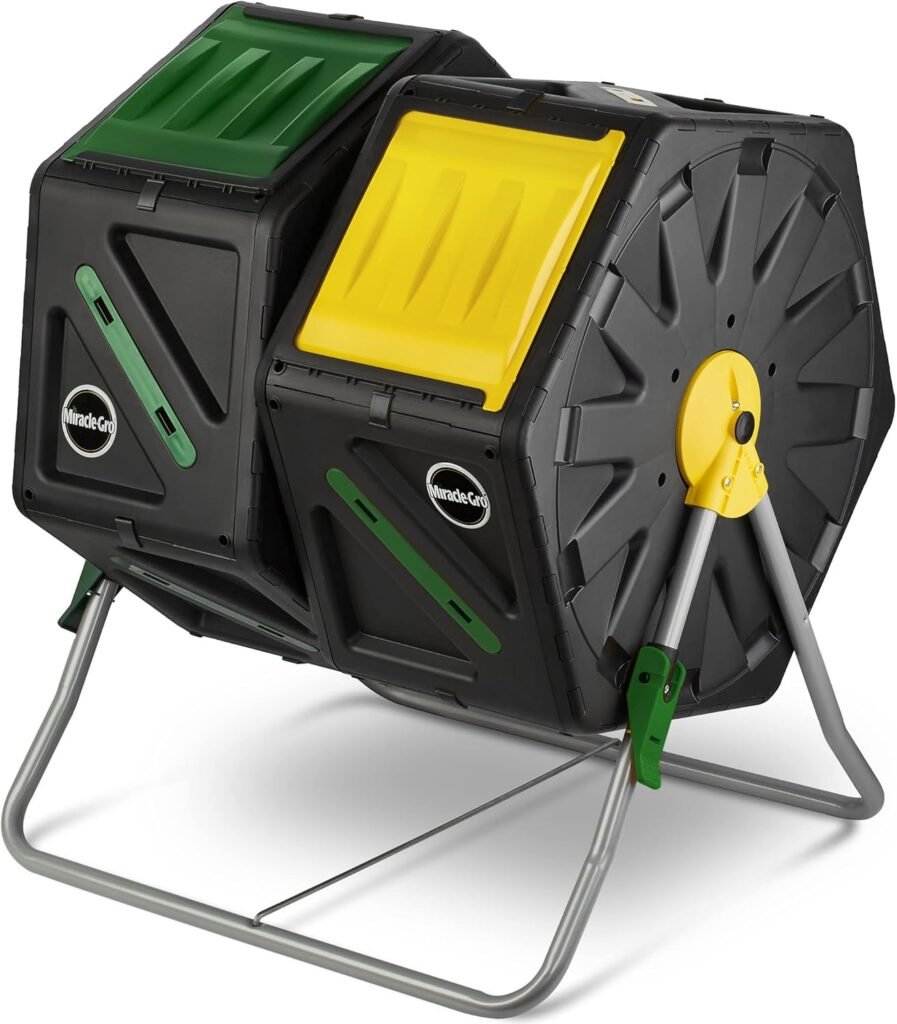
How it works: This system has two rotating chambers so you can fill one side while the other finishes composting. Tumbling the contents aerates them for faster decomposition.
Why it’s great:
- Speeds up composting
- No digging or turning with a fork
- Neat and elevated off the ground
Best for: People with moderate balcony space and composting experience.
Tip: Chop food scraps small for quicker results.
4. Stackable Indoor/Outdoor Bin
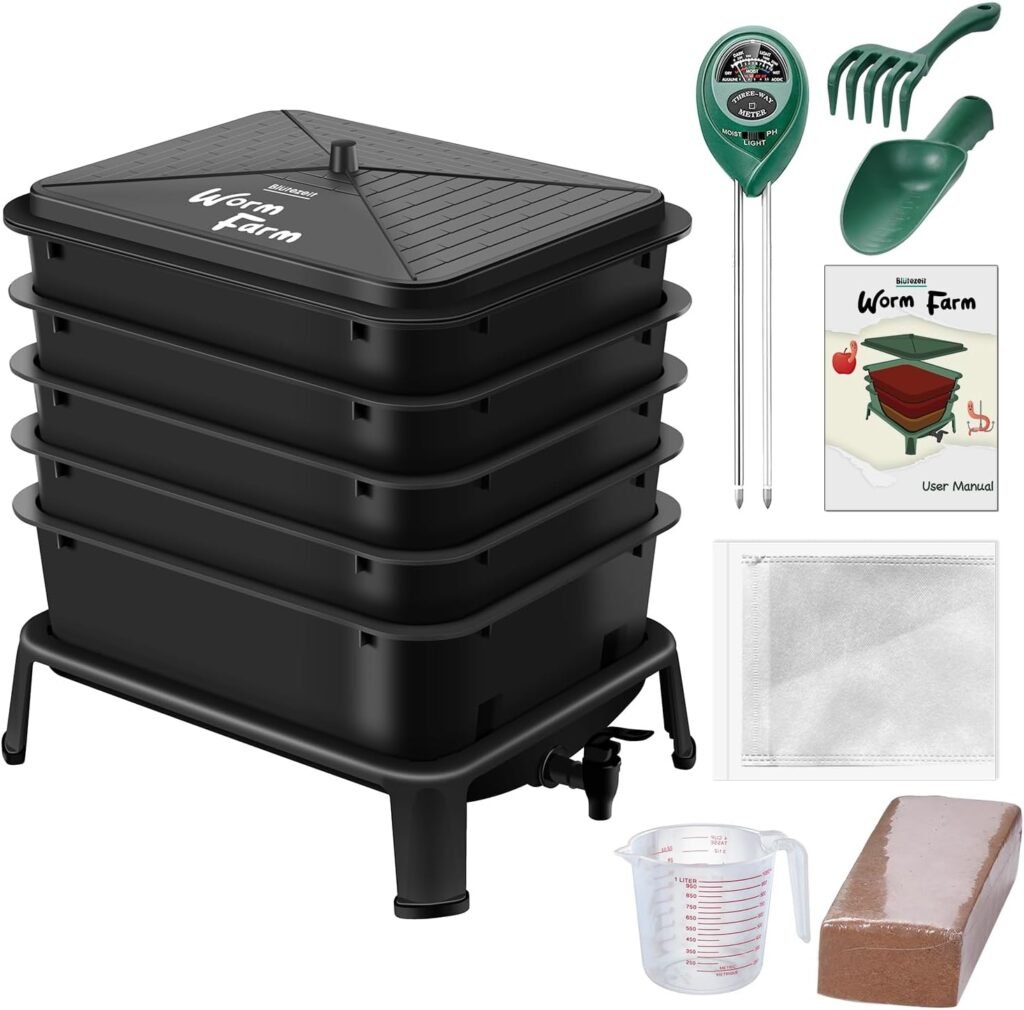
How it works: These modular bins stack vertically, allowing you to add layers as you go. Each level acts like a stage in the composting process.
Why it’s great:
- Space-saving design
- Expandable as needed
- Easy to move and clean
Best for: Tight balconies or those composting in phases.
Tip: Add a layer of dry material (like shredded paper) after every food layer to balance moisture.
5. Countertop to Balcony Transfer Bin
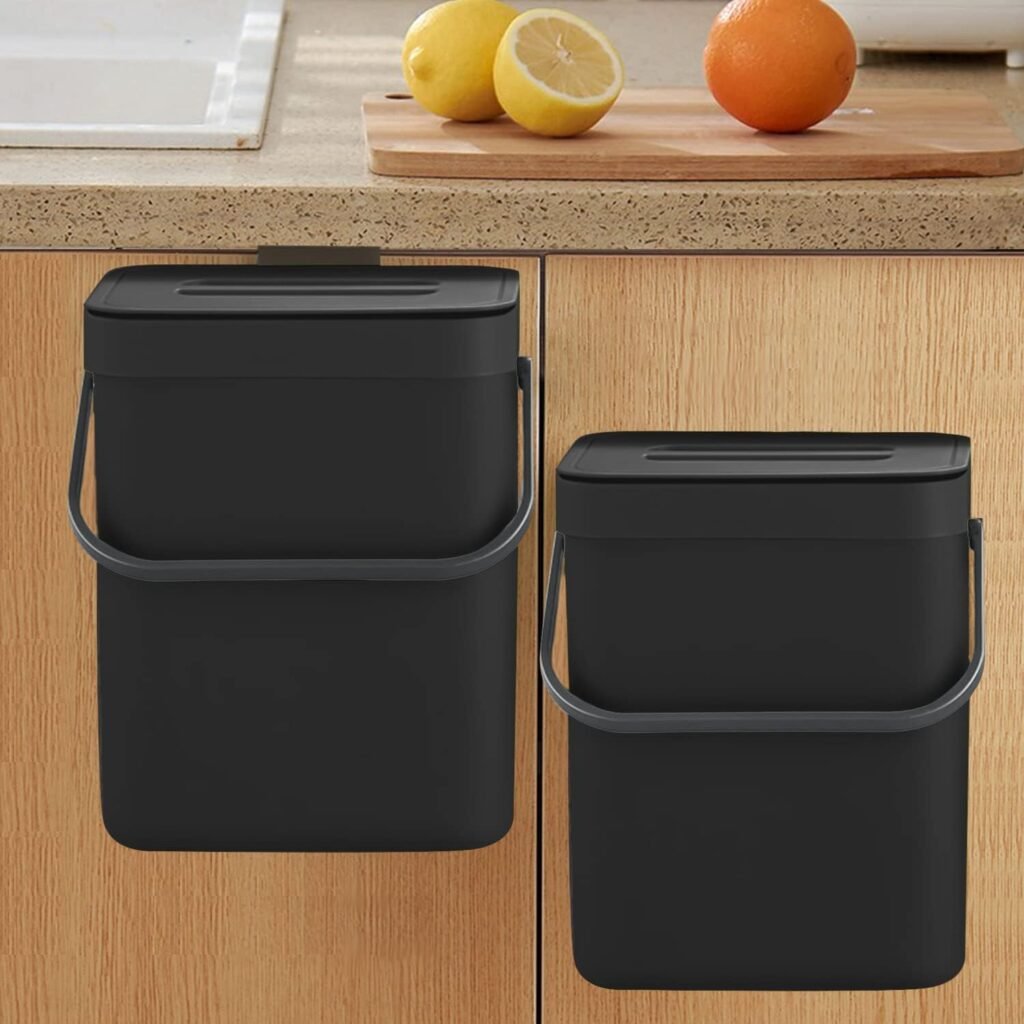
How it works: This is not a composter but a sealed bin (often with a carbon filter) for collecting scraps indoors. Once full, you transfer the contents to your outdoor system.
Why it’s great:
- Clean and odor-free kitchen
- Pairs perfectly with any composting setup
- Encourages daily waste collection
Best for: Anyone who doesn’t want to walk outside after every meal.
Tip: Empty every few days to avoid buildup.
6. Compact Electric Food Composter
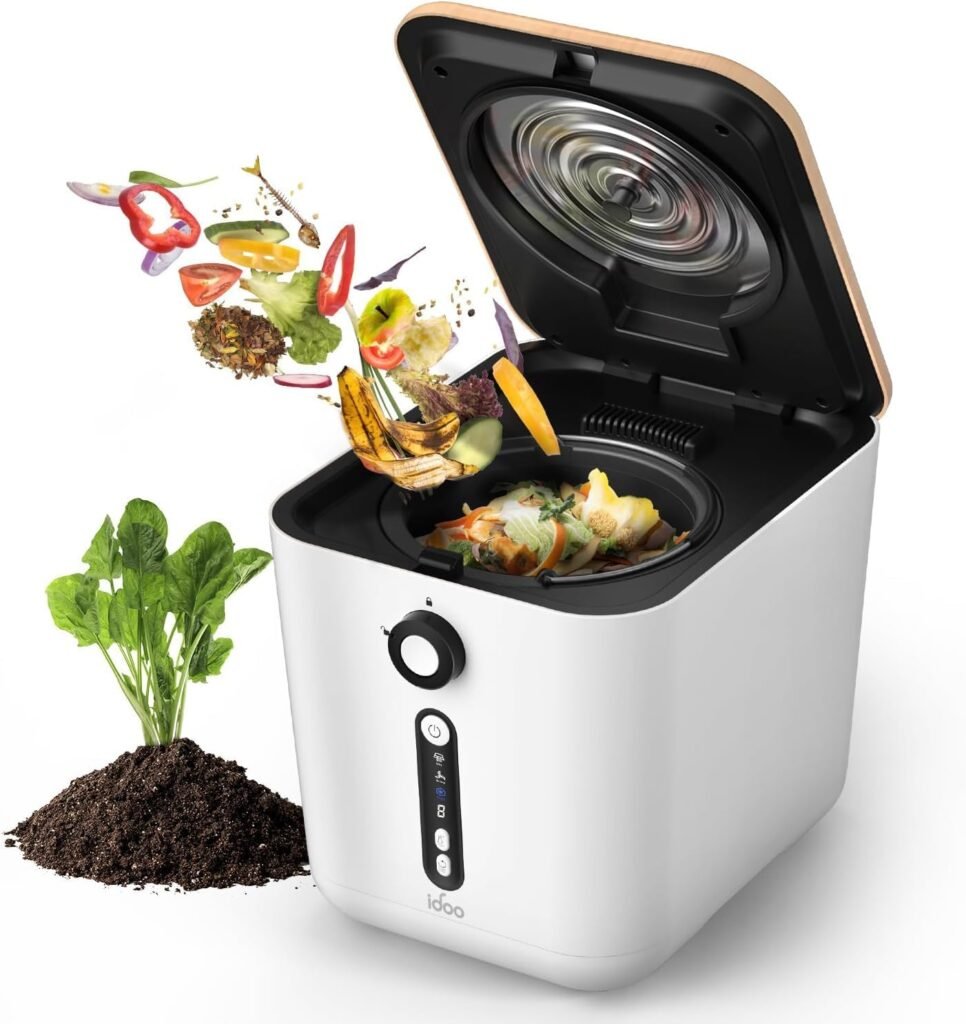
How it works: Electric composters dehydrate, grind, and cool your scraps in hours, turning them into pre-compost or soil amendment.
Why it’s great:
- Fast and clean
- Perfect for high-rise living
- No odor, no pests
Best for: Tech lovers, busy professionals, or those with zero garden space.
Tip: Use the resulting material in planters or mix it with soil for decomposition.
7. Upcycled Bucket Compost System (DIY)
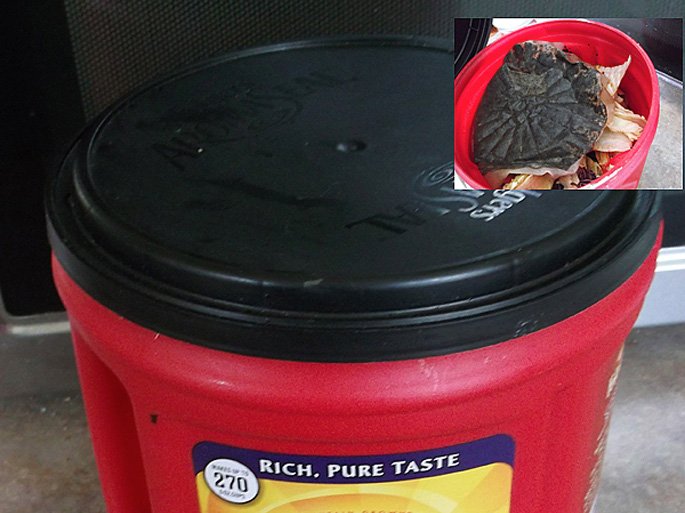
How it works: Drill holes in a plastic bucket, add a lid, and use it for aerobic composting. You can build two for rotating batches.
Why it’s great:
- Virtually free
- Fully customizable
- Great beginner project
Best for: DIYers and sustainability enthusiasts.
Tip: Place on a tray to catch moisture and protect balcony floors.
8. Enclosed Garden Tower

How it works: A vertical planter with a compost column in the center. Food scraps go in the center, and worms move nutrients to the plants.
Why it’s great:
- Space-saving
- Doubles as a planter
- Great for growing herbs and greens
Best for: Urban gardeners who love multitasking.
Tip: Water from the top to help nutrients travel through the soil.
9. Foldable Fabric Compost Bag
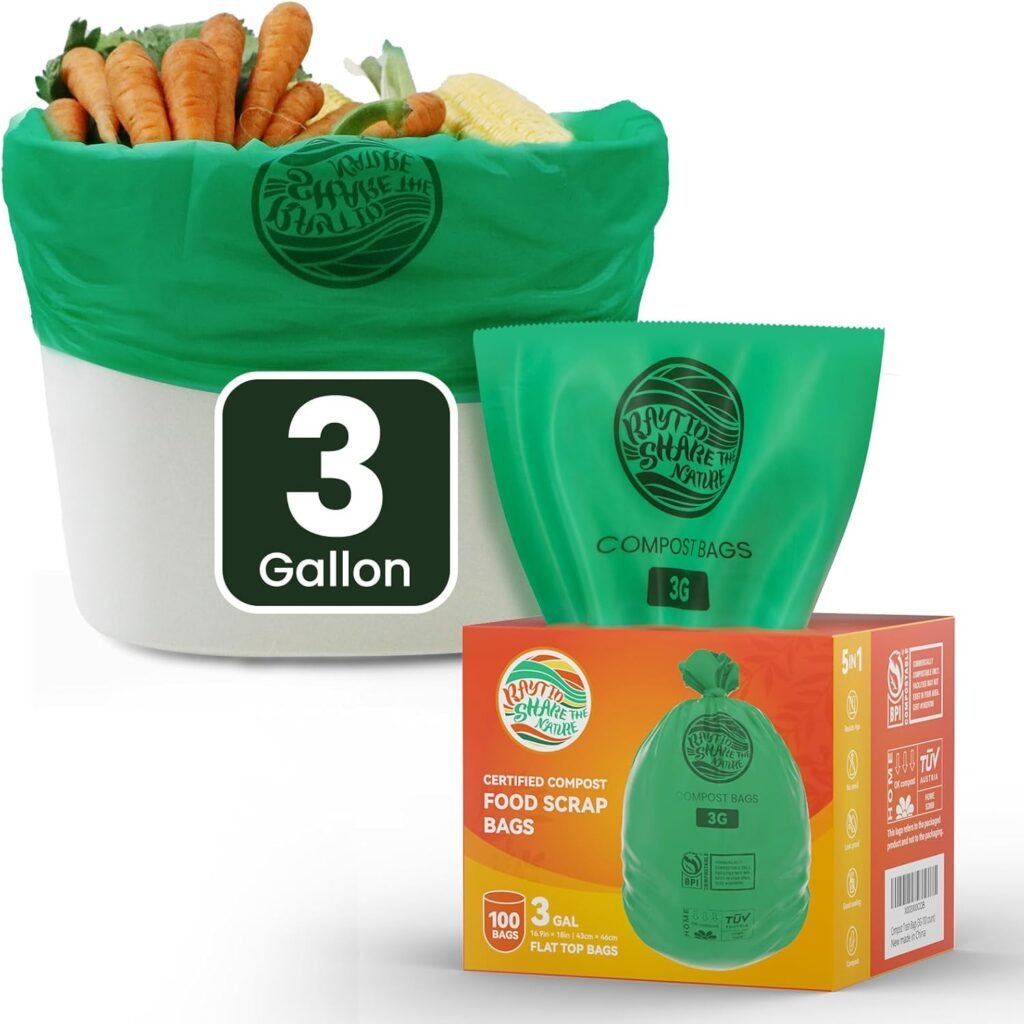
How it works: These breathable bags allow aerobic decomposition and can be folded flat when not in use.
Why it’s great:
- Lightweight and portable
- Ideal for renters
- Simple to store off-season
Best for: Those wanting a flexible and temporary composting option.
Tip: Keep covered to avoid pests or excess rainwater.
10. Balcony Compost Tumbler on Stand
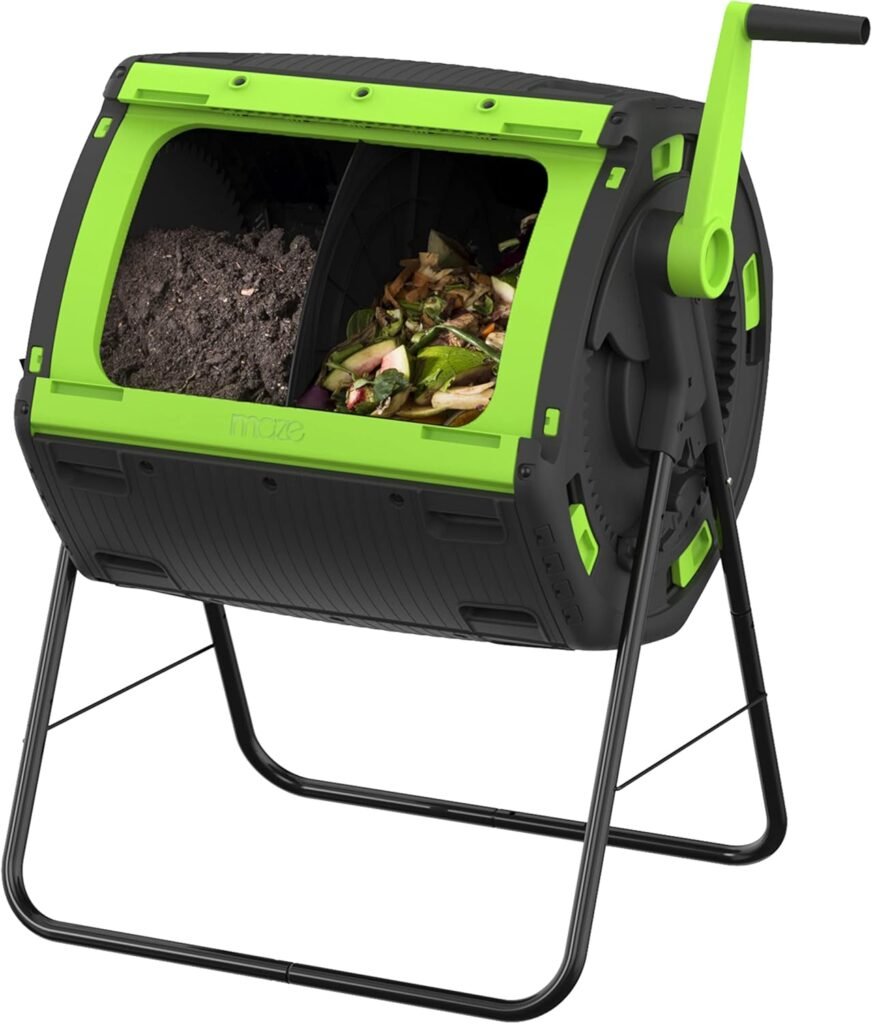
How it works: Similar to the dual-chamber tumbler but mounted higher. Makes it easier to use for those with mobility issues or raised setups.
Why it’s great:
- Ergonomic design
- Off-ground to prevent pests
- Keeps balcony neat
Best for: Older users or those needing easier access.
Tip: Use a catch tray underneath to collect compost tea.
11. Mini Hot Bin Composting System

How it works: Insulated bins raise the internal temperature to speed up decomposition. Works year-round—even in cold climates.
Why it’s great:
- Very fast results
- No turning needed
- Minimal odor
Best for: Serious composters and cold-weather users.
Tip: Add a mix of greens and browns to maintain heat levels.
Tips for Balcony Composting Success
- Balance your greens and browns: Use equal parts moist food scraps and dry materials (like shredded paper or leaves).
- Chop scraps small: Speeds up decomposition.
- Monitor moisture: Compost should be like a wrung-out sponge.
- Avoid adding: Meat, dairy, and oils (unless using bokashi or electric systems).
- Keep pests out: Use lids, screens, and proper drainage.
Final Thoughts
Balcony composting is a powerful act of sustainability—no backyard required. Whether you’re using a DIY bucket or a smart electric composter, the important thing is starting somewhere. Choose a system that matches your space, lifestyle, and gardening goals.
Besides reducing waste, you’ll also create something beautiful and beneficial: nutrient-rich compost for your own urban garden.
Which composting system sounds perfect for your balcony? Let us know in the comments or tag us in your composting journey!

